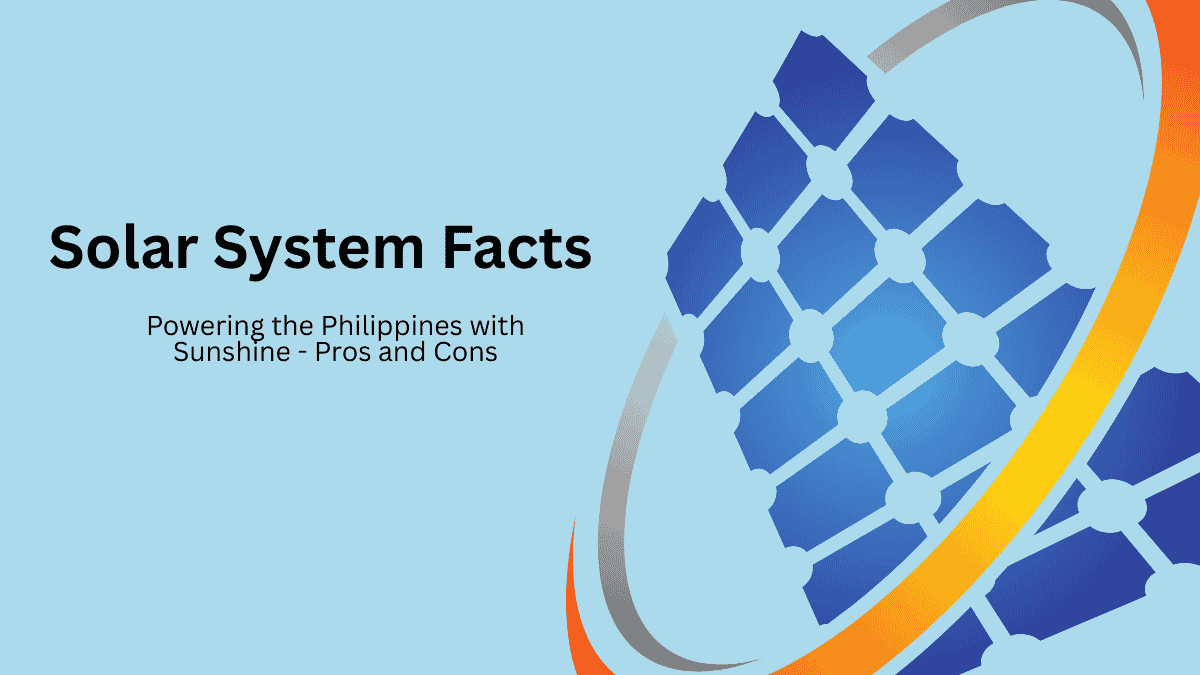The Philippines, blessed with a tropical climate, has significant potential for utilizing solar energy systems. Understanding the key facts about solar systems, alongside the pros and cons of solar power, is vital for Filipinos considering this sustainable energy solution nationwide.
Key Solar System Facts for the Philippines:
- Abundant Sunshine: The Philippines experiences high levels of solar irradiance throughout the year, making it ideal for solar energy generation across all regions.
- Free Energy Source: Sunlight, the fuel for any solar power system, is free and inexhaustible, leading to long-term savings on energy costs for Filipinos.
- Versatile Applications: Solar systems can power everything from small rural homes to large commercial establishments across the Philippines.
- Scalable Technology: Solar panels are modular, allowing Filipinos to easily expand their solar power capacity as their energy needs grow.
- Falling Costs: The price of solar panels and related solar technology has decreased significantly, making solar energy a more affordable option for many in the Philippines.
- Minimal Maintenance: Solar systems generally require little upkeep, mainly occasional cleaning of the solar panels.
- Silent Operation: Unlike noisy generators, solar power systems operate silently, improving the quality of life in communities throughout the Philippines.
- Grid-Tied and Off-Grid Options: Filipinos can choose grid-tied solar systems to connect to the utility grid and potentially benefit from net metering or off-grid solar systems with batteries for energy independence in remote areas.
Pros of Solar Power in the Philippines:
- Lower Electricity Bills: Filipinos can significantly reduce their monthly electricity bills by using solar energy.
- Environmental Benefits: Solar power is a clean and renewable energy source, reducing the country’s carbon footprint and air pollution.
- Energy Independence: Utilizing solar energy lessens the Philippines’ reliance on imported fossil fuels, enhancing national energy security.
- Government Support: The Philippine government often provides incentives and programs to encourage solar energy adoption.
- Increased Property Value: Homes with solar panel systems can have a higher market value in the Philippines.
- Powering Remote Areas: Off-grid solar systems offer a crucial electricity source for remote Filipino communities.
- Job Creation: The expanding solar industry creates employment opportunities across the Philippines.
Cons of Solar Power in the Philippines:
- High Initial Investment: The upfront cost of purchasing and installing a solar power system can be a significant barrier for some Filipinos.
- Intermittent Power: Solar energy generation depends on sunlight availability and is reduced on cloudy days or at night. Battery storage or grid connection can mitigate this.
- Space Requirements: A sufficient area is needed for solar panel installation, which might be a challenge for properties with limited space in densely populated areas of the Philippines.
- Aesthetics: Some Filipinos may find the look of solar panels on rooftops unappealing.
- Battery Costs and Lifespan: For off-grid or backup power, batteries are expensive and require periodic replacement.
- Net Metering Limitations: The effectiveness of net metering can vary across different utility providers in the Philippines.
- Weather Dependence: While durable, solar panels can be affected by extreme weather events common in the Philippines, such as typhoons.
Conclusion:
Understanding the facts about solar systems and carefully considering the pros and cons of solar power is vital for the Philippines. Despite the initial investment, the long-term advantages of lower electricity costs, environmental benefits, and increased energy independence make solar energy a compelling solution for powering the nation sustainably.
As solar technology advances and becomes more accessible, its role in the Philippine energy landscape will continue to grow.

